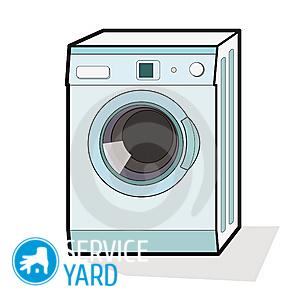Why doesn't the washing machine heat water?
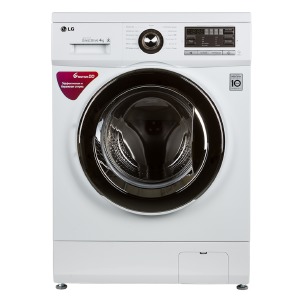
For high-quality washing, not only chemistry is important, but also the appropriate temperature, because it is almost impossible to remove serious pollution in cold water. Therefore, if the washing machine does not heat water, then you can forget about high-quality washing. What may be the causes of this phenomenon and how to fix the problem, you will learn from this article.
to contents ↑How to understand that the water does not heat up?
Poor heating of the water in the washer is noticeable almost immediately. This can be determined by leaning your hand against the glass of the closed door.
Important! Lean your hand against the door carefully, as if the water is heated to very high temperatures, you can get a burn.
If the water does not become warmer 20-30 minutes after the start of the washing process, then this is the first signal that the washing machine (LG, Samsung, Indesit, Ardo, Ariston, Candy, Bosch, Zanussi, etc.) does not heat the water.
Different models of washers behave differently during the appearance of problems with heating water:
- Modern models of units stop the washing process at the moment when, according to the program, water heating should begin, and give an error signal on the display.
- Simpler models or old units can go through the entire wash cycle in cold water, as if nothing had happened.
Why is the washing machine not heating water?
If the washing machine does not heat the water, then the problem is usually located somewhere in the area of the spiral. Usually it can be either scale, or a fuse tripped, or a faulty thermostat. But the error may also lie in the area of malfunction of the programmer, although the likelihood of this is much lower.
Therefore, first of all, pay attention to error codes, without which today no modern machine can do.
Important! If the LG washing machine does not heat water, then it will also send a message to the phone, thanks to the Smart Diagnistic function.
In our separate review, we spoke in detail about LG direct drive washing machine.
But if the study of the troubleshooting instructions did not tell you anything, then investigate the situation and fix the problem yourself. Consider several reasons why the washing machine does not heat up water.

Reason # 1. Incorrect connection
If you have saved on quality connecting a washing machine, then there will be a problem of unauthorized withdrawal of water into the sewer. With such a malfunction, the water in the tank just does not have time to warm up to the required temperature, since the warm water is constantly drained and the cold, new portion is automatically added.
Solution: disassemble and reassemble all connection nodes, observing the rules of the instruction as clearly as possible.
Reason number 2. Wrong wash program selection
Due to the banal carelessness, you can choose the wrong washing mode and therefore the washing machine does not heat water. Many modes, for example, for delicate, delicate fabrics or woolen products, are designed for washing at low temperature (about 30 ° C). Perhaps you have chosen just such a program for washing.
In addition, in some models, the choice of washing program and water temperature is carried out by various knobs and switches. For example, you set 95 C with the temperature selection knob, and a mode was set with the program selection knob that provides for a temperature of only 60 C. Therefore, the selected program takes precedence over the selected temperature mode, and it is simply ignored. In this case, read the instructions again, study icons on the washing machine and select the desired mode and temperature correctly.
Important! The instruction for the washing machine contains a table of the temperature range and modes for a particular material and product. And also on our portal you can find useful tips on how to wash some types of products:

Reason number 3. Malfunction of the heating element
Another reason that the washing machine does not heat water is the failure of the main active element in this business - TEN. The cause of its breakdown may be:
- Power surges.
- Circuit closure.
- Scale build-up due to hard water and low-quality powder.
- Manufacturing defects.
- The age of the heater (with low quality water, electric heaters serve an average of 3-5 years).
In order to check the health of the heater, use the tester in the dialing mode. If the cause of the malfunction is in the tubular electric heater, then the replacement of the heating element is simply necessary. The replacement process is quite simple. To conduct the entire operation you need:
- Remove the rear housing cover.
- Loosen parts.
- Get the heater.
- Install a new one.
Important! Be careful when removing and replacing, as removing it too quickly and installing it incorrectly will damage the plastic tank.
When buying a new heating element, be careful, as an unsuitable part may not replace the old one, interfere with the normal operation of the unit, and even break household appliances. We recommend that you take a picture before buying a heater, since many sellers or repair shops can pick up an element according to one appearance.
Important! To extend the life of the heating element and soften the water, use high-quality powders that positively affect both metal and water, or special softeners.
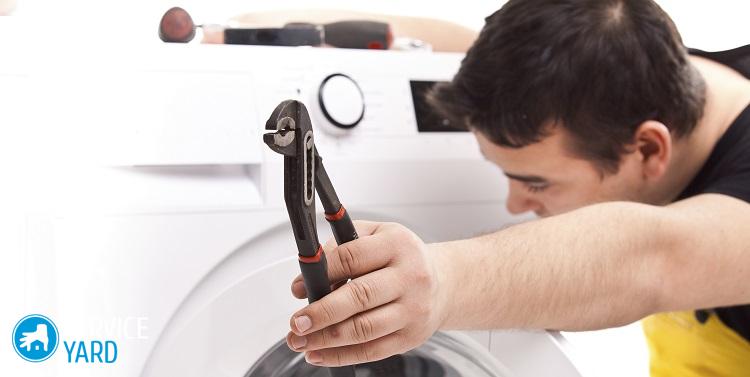
Reason number 4. Faulty temperature sensor (thermostat)
Depending on the model of the unit, the thermostat can either be located in the heater itself or on the surface of the tank. It is he who monitors the temperature of the water and sends a signal to the “brain” of the washing machine to heat it.
Very often sensors fail due to scale. To solve the problem with the thermostat - you need to replace it.
Important! Almost all models of washing machines are equipped with forced heating using the button on the front side. If heating occurs when the button is pressed, but not in automatic mode, the thermostat is faulty.
Reason number 5. Faulty electronic module or programmer
As a result of voltage drops, the stabilizer in the control module may fail.
What could happen to him?
Anything: from bad contacts (microcracks on the tracks) on the board to the device’s malfunction. As a result of a breakdown, the main brain center of the device starts sending incorrect commands, which violates the entire operation of the washing machine.
In this case, a “flashing” or a complete replacement is necessary. washing machine control module.
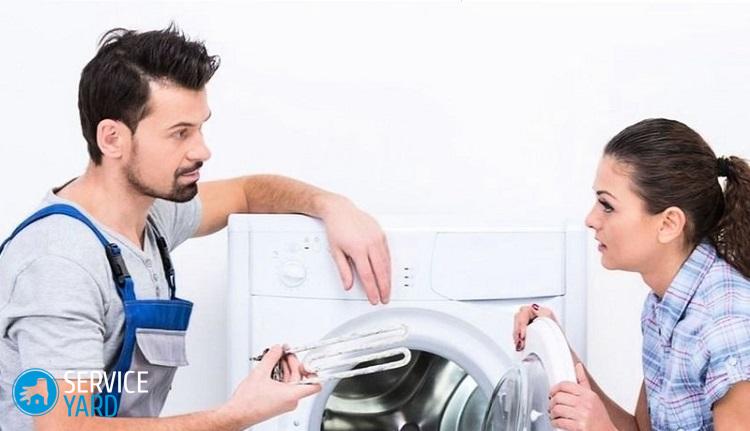
Reason # 6. Water level sensor malfunction
Very often, on some models of washing machines, the water level sensor tube becomes clogged. It is clogged with hairs, pile from clothes or other small details. All this negatively affects the relationship of the level switch with the control module, and leads to the fact that the washer draws water to the desired level, but does not heat up due to the lack of an appropriate command. To correct the problem, blow and rinse the handset or replace the sensor.
Reason number 7. Open circuit TENA
If all of the above reasons are not the main problem of why the washing machine does not heat water, it is possible that the heater is broken. In order to check the condition of the circuit, it is necessary to verify the integrity of the wires adjacent to the heating element. In some models, the wires are located close to the body of the machine, which can cause premature erasure of the wire insulation during frequent use. If you notice this malfunction, then it is necessary to solder the torn wires or replace them with new ones.
Reason number 8. Scale or water hardness
The reason for the formation of scale on the heating element is an excessive amount of calcium and magnesium salts dissolved in water (the more salts, the greater the hardness of the water), as well as water containing fine dirt (rust and the like).
Scale significantly affects the thermal conductivity of the metal, and as a result - affects the heating of water. When heated, the salts contained in the water decompose into carbon dioxide and insoluble sediment. It is deposited on the walls of the heating element and the tank of the washing machine. Dirt, in turn, wears out the movable elements of the intake valve and causes it to malfunction.
The higher the temperature of the water during washing, the faster the scaling will form. Therefore, to avoid such problems, wash clothes at a temperature not exceeding 60 C, and use special means to soften water and descaling and rust removal.
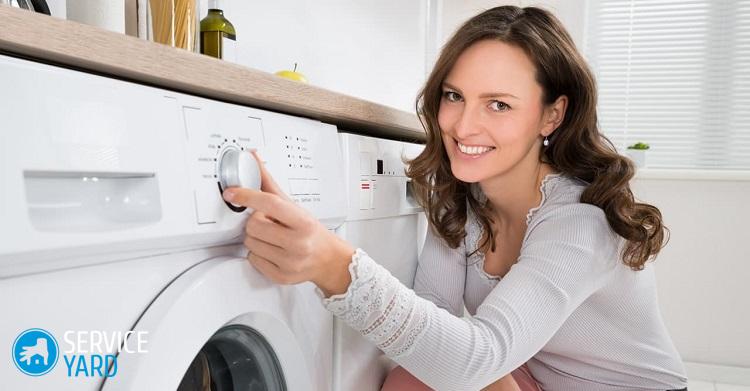
Useful Tips
The fact that the washing machine heats the water for a very long time is faced by many owners of equipment, and the most common reason for this behavior of the washing machine is the scum layer on the heating element.
You can cope with the problem yourself as follows:
- Place 2-3 tablespoons of citric acid in the detergent tray.
- Set the highest temperature (95 C) and the longest washing mode. Do not put laundry in the drum.
- After the cycle is over, start the washing machine for an additional rinse.
- Rinse the powder tray to remove any residual citric acid.
Stock footage
We hope that thanks to the information obtained from our article, you have identified the reason why your washing machine does not heat water, and successfully eliminated it. If you were not able to repair the equipment yourself, then contact the specialists who will help fix your problem right in the apartment, and on the same day your equipment will be back in service.
- What is the temperature for washing linen?
- What is the temperature for washing jeans?
- How to wash white things in a washing machine 🥝 How to remove clothes from gray
- In what mode to wash t-shirts?
- LG Direct Drive Washer
- Connect washing machine
- Icons on the washing machine
- Washing machine control module
- Scale and rust remover










